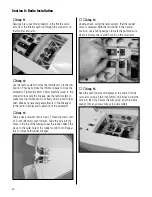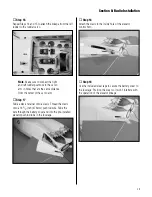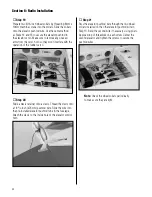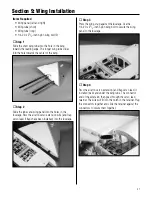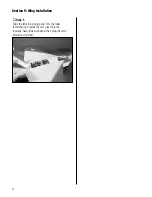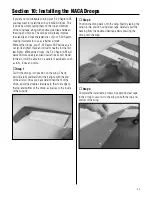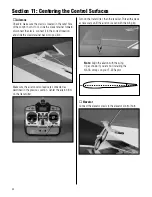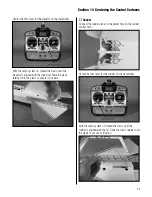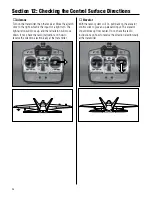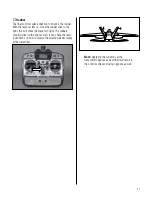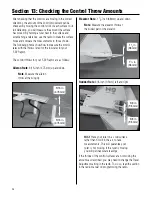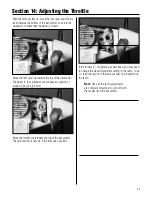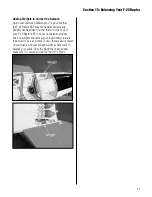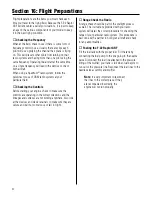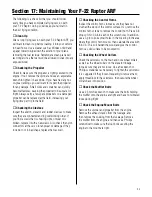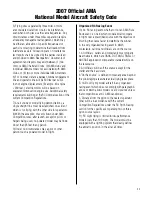
52
Flight preparations are the items you must check each
time you travel to the flying field. Because the F-22 Raptor
ARF will encounter a variety of situations, it is best to keep
an eye on the various components of your model to keep
it in the best flying condition.
Checking the Frequency
When at the field, check to see if there is some form of
frequency control in use. Usually there are clips each
pilot will use signifying the channel their plane is flying
on. This will prevent other pilots from turning on their
radio systems and having more than one pilot using the
same frequency. Operating two aircraft at the same time
on a single frequency will lead to the demise of one or
both aircraft.
When using a Spektrum
®
radio system, follow the
guidlines for use of DSM radio systems at your
particular field.
Checking the Controls
Before starting your engine, check to make sure the
controls are operating in the correct directions and the
linkages and surfaces are not binding anywhere. Also look
at the clevises and clevis retainers to make sure they are
secure and will not come loose or fail in flight.
Range Check the Radio
A range check should be part of the preflight process
as well. The instructions provided with your radio
system will detail the correct procedure for checking the
range of your particular radio system. This procedure is
best done with a partner to hold your aircraft and check
for any abnormalities.
Fueling the F-22 Raptor ARF
Fill the fuel tank with the proper fuel. Fill the tank by
connecting the fuel pump to the line going to the needle
valve. Disconnect the fuel line attached to the pressure
fitting of the muffler; your tank is full when fuel begins to
run out of the pressure line. Reconnect the fuel lines to the
needle valve assembly and muffler.
Note
: It is very important to reconnect
the lines to the correct place. If they
are reconnected incorrectly, the
engine will not run properly.
Section 16: Flight Preparations

